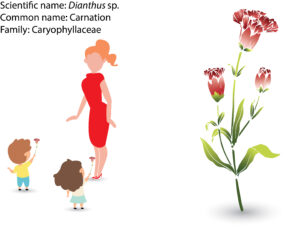
The importance of water in plant
The myth that how life is formed is considered as many aspects are involved, but water is one of the most important elements, both at the early stage and the lately evolution of life. Water is not just participate as the building blocks, but also as the director, the medium and the regulator. Every organism needs water in the form of liquid or gas. How long can we survive without the water, H2O? The study […]
Read More
The swiss cheese plant – Monstera
Monstera is one of the most popular ornamental plants. It is famous and increasingly on demand because of the beauty of its big leaves. Monstera that is scientifically known as Monstera sp. is a genus of twenty-five species. Furthermore, it is native to tropical America and the West Indies. Most of the house plant lovers keep this plant on their list apart from Philodendron. Like Philodendron, it is a very large evergreen tropical climber that […]
Read More
There is no botanical hospital. Does a plant own a weapon?
Unlike animals, plants are sessile organisms, which are not able to move by themselves. They do not have wings to fly nor legs to walk. However, plants are anywhere, and they are transported from an area to another area with the help of a disperser, or a pollinator. The dispersers/pollinators can be rain or wind, or it can be organisms like insects, animals, and humans. The wild nature is about being prey and predator. Prey […]
Read More
What is your name? – Plant taxonomy
What is your name? You get an immediate response out of a crowd whenever calling somebody’s name. We establish connections and start bonding with each other by our names. However, plants can never respond by calling their names. But still, plants are meaningful to us, such as rose is love, lotus is enlightenment, tea is refreshment, rice is fertility. We learn the names of Plants through books, friends, and the attached “name tags’ from supermarkets […]
Read More
The corpse flower, the giant inflorescence in the world – Amorphophallus titanum
The largest flower is Rafflesia. Do you know what the largest inflorescence in the world? Yes, the answer is Amorphophallus titanium that is commonly known by the public as the corpse flower. Amorphophallus titanium is the largest inflorescence consisting of a sizeable encircling bract or known as spathe, purple from the center of which emerges a fleshy spike tiny flower. It is categorized as monoecious in which the male and female flowers arranged in a […]
Read More
The flower of Mother’s Day
The flowers that dedicated to mothers on the coming Mother’s day are carnation, representing the deep love and loyalty to mothers. Scientifically known as Dianthus sp., consists of around three hundred species, carnation is a meaningful flower choice with a long history. The name dianthus can be translated to “flower of love” or “flower of the gods”. It’s mostly found in Europe and Asia, a single species is found in Arctic North America and a few extending […]
Read More
The stories of the biggest flower in the world, Rafflesia
The largest flower in the world, Rafflesia (Rafflesiaceae), however, is from a small obligate endo-holoparasitic Asian plant genus. Although famous for its huge flowers, it’s a rare species and only lives in a small and special area that is high island endemism. This genus is classified as a member of Malpighiales, and native to tropical Southeast Asia, mainly found in Indonesia, Malaysia, and the Philippines. There are roughly 30 to 37 Rafflesia species that are […]
Read More
A flower or an inflorescence?
A flower is the reproductive organ of flowering plants. After successful pollination via self- or cross-pollination aided by pollinators, the flower turns into fruits or seed pods. However, the “flowers” are not always called flowers, sometimes they are referred to as inflorescence. What are the differences and relationships between a flower and an inflorescence? A flower, known as bloom or blossom is the seed-bearing part of a plant that consists of reproductive organs like stamens […]
Read More